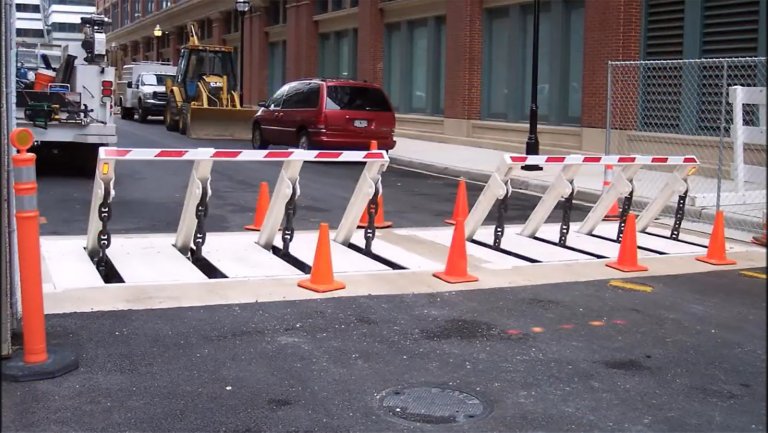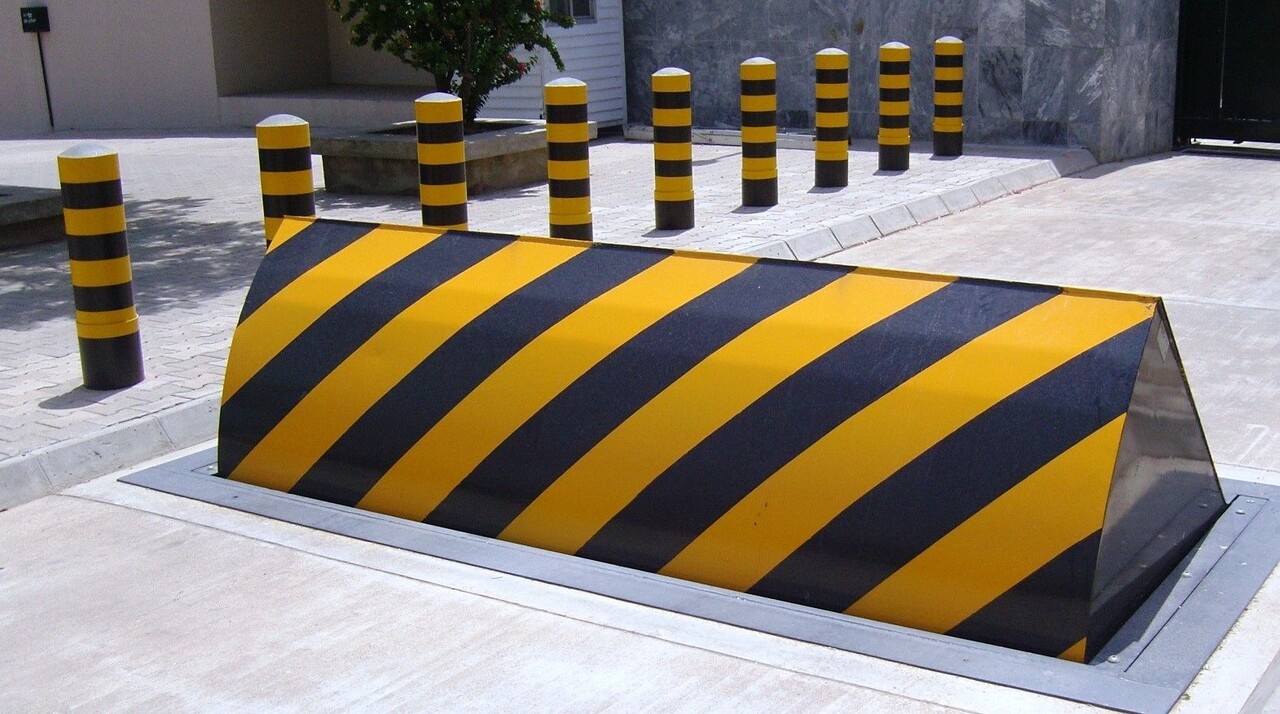Wedge Barriers for Dummies
Wedge Barriers Can Be Fun For Everyone
Table of ContentsThe Facts About Wedge Barriers UncoveredWedge Barriers for Dummies


18 might be done much more swiftly, easily, and cost properly. FIG. In specific personifications, the support 30 may be a steel framework including plates, beams(e. g., I-beams ), and/or various other structures that are secured within the structure 14, which may be concrete. At the surface 12, a top side 28 of the support 30 might go to least partially revealed
, thus enabling the add-on of the obstacle 10 to the anchor 30. g., threaded holes)in several light beams or plates of the anchor 30 may be revealed to the surface 12. In this fashion, screws 32 or other mechanical fasteners may be utilized to secure the obstacle 10 to the support 30. As the barrier 10 is mounted to the surface 12 of the structure 14, collection of particles and various other material underneath the barrier may be minimized, and components of the bather 10 may not be subjected to listed below quality settings. As shown by reference numeral 52, the training mechanism 50 includes components disposed beneath the wedge plate 16. For instance, the elements 52 below the wedge plate 16 might include an electromechanical actuator, a cam, one or more cam surfaces, and so forth. In addition, the lifting mechanism 50 includes a springtime assembly 54
The springtime rod 58 is coupled to a camera(e. g., camera 80 displayed in FIG. 4) of the lifting system 50. The springs 60 disposed concerning the spring rod 58 are held in compression by spring sustains 62, consisting of a taken care of spring assistance 64. That is, the fixed springtime support 64 is fixed loved one to the foundation 14 and the remainder of the bather 10.
Not known Incorrect Statements About Wedge Barriers
The remaining force used to
the cam to deploy release wedge plate 16 may might provided given an electromechanical actuator 84 or other various other. The spring assembly 54 and the actuator 84(e. Wedge Barriers. g., electromechanical actuator)might operate together to translate the cam and raise the wedge plate 16.
As pointed out above, the spring assembly 54 puts in a consistent pressure on the web cam, while the electromechanical actuator may be regulated to put in a variable pressure on the camera, thus enabling the lifting and reducing( i. e., deploying and withdrawing )of the wedge plate 16. In specific embodiments, the constant pressure used by the springtime assembly 54 might be adjustable. g., electromechanical actuator) is impaired. As will be valued, the springtime setting up 54 may be covered and safeguarded from particles or other elements by a cover plate(e. g., cover plate 68 displayed in FIG. 4) that may be substantially flush with the raised surface 38 of the foundation 14. As discussed above, in the deployed position, the wedge plate 16 serves to block gain access to or traveling past the barrier 10. The obstacle 10(e. g., the wedge plate 16 )may obstruct pedestrians or vehicles from accessing a building or pathway. As reviewed above, the obstacle 10 is connected to the support 30 safeguarded within the structure 14,

front braces 71. As a result, the linkage settings up 72 may pivot and turn to allow the collapse and extension of the affiliation settings up 72 throughout retraction and deployment of news the bather 10. The linkage assemblies 72 cause activity of the wedge plate 16 to be restricted. If a car is traveling in the direction of the deployed wedge plate 16(e. For example, in one situation, the safety and security legs 86 might be extended duringmaintenance of the barrier 10. When the security legs 86 are released, the safety and security legs 86 support the weight of the wedge plate 16 versus the surface area 12. Therefore, the training system 50 might be shut down, serviced, gotten rid of, changed, and so visit homepage forth. FIG. 5 is partial viewpoint sight of an embodiment of the surface-mounted wedge-style obstacle 10, illustrating the web cam 80 and the cam surface areas 82 of the lifting device 50. Especially, 2 web cam surfaces 82, which are referred to as reduced web cam surfaces 83, are placed listed below the webcam 80. The reduced webcam surface areas 83 may be fixed to the surface area 12 (e. For instance, the reduced webcam surface areas 83 and the placing plate 85 might form a solitary piece that is protected to the anchor 30 by bolts or other mechanical bolts. Furthermore, 2 cam surface areas 82, which are described as top web cam surfaces 87, are positioned over the camera 80 and coupled to (e. In other personifications, stepping in layers or plates may be positioned in between the surface area 12 and the lower camera surface areas 83 and/or the wedge plate 16 and the upper camera surfaces 87 As pointed out above, the webcam
80 converts along the camera surfaces 82 when the wedge plate 16 is lifted from the withdrawed setting to the deployed position. In addition, as stated over, the springtime setting up 54 (see FIG. 3 )may give a pressure acting upon the cam 80 in the instructions 102 using springtime pole 58, which might minimize the pressure the electromechanical actuator 84 is needed to relate to the cam 80 in order to actuate and lift the wedge plate 16. 1 )to the released position(see FIG. 4). As revealed, the cam 80 includes track wheels 104(e. g., rollers), which contact and translate along the camera surface areas 82 anonymous throughout operation.